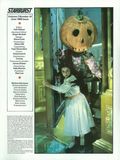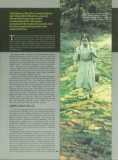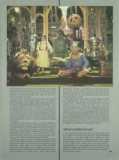







Walt Disney Films have ventured down the Yellow Brick Road For a special effects-filled adventure in the wonderland of Oz. Alan Jones investigates the technical wizardry that has been employed to produce this magical fantasy.
The Scarecrow has been deposed and is being held captive by the tyrannical Nome King. The Emerald City lies in ruins at the end of the Yellow Brick Road and its former residents have all been turned to stone. The Tin Man and the Cowardly Lion are now just mere statues. Where is little Dorothy now that these familiar characters from the pages of American folklore need her most?
The answer lies in Return to Oz, the Disney studios' $25 million sequel of sorts to M.G.M.’s classic 1939 The Wizard of Oz. Disney have held the rights to all 13 ‘Oz’ sequels by L. Frank Baum for over 30 years, but their attempts at continuing Dorothy’s adventures in Baum’s fantasy land - including a musical version planned in 1957 - have all come to nothing for various reasons.
Now, with Oscar winning sound technician turned director, Walter Murch, executive producer Gary Kurtz and producer Paul Maslansky, their long cherished ambition has finally reached fruition.
Ten-year-old Fairuza Balk steps into Judy Garland’s immortal ruby red slippers as the Kansas farm girl who is swept into the land of Oz - this time by a spectacular flood. With the help of Billina, a talkative hen, Jack Pumpkinhead and Tik Tok, a helpful robot, Dorothy sets out to oppose the Nome King’s regime and the evil Princess Mombi who owns a wardrobe of interchangeable heads and wants Dorothy’s to add to her collection. Also starring Nicol Williamson, Piper Laurie, Jean Marsh and Matt Clark, Return to Oz began shooting at Elstree studios in February 1984 for a Summer ’85 release on five elaborate sets, the most impressive being the vain Mombi’s mirrored salon which alone cost $325,000 and used 8224 square feet of glass.
[…]